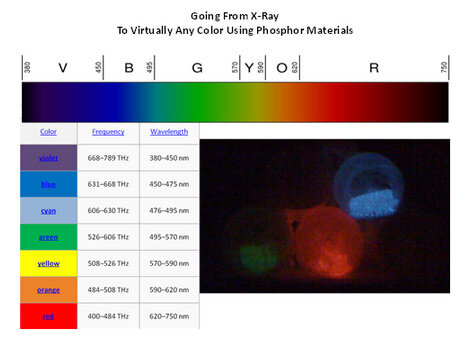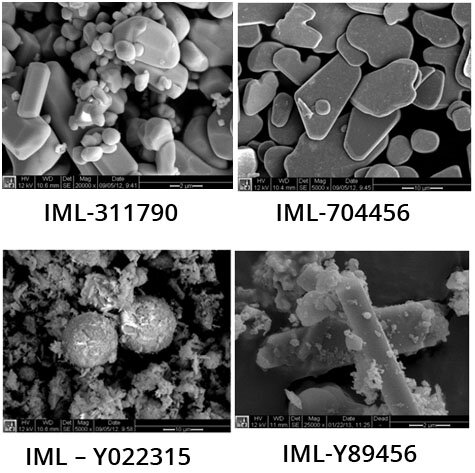Energy Converters
The core of our platform technology resides in the innovation of energy modulators. These nano and micron size particles are capable of absorbing wavelengths of energy and “up converting” or “down converting” them to a higher or lower wavelength. These particles enable in-situ energy conversion where we can use an appropriate portion of the electromagnetic spectrum with desirable characteristics, such as high depth of penetration, to subsequently convert the energy around the target into a different portion of the electromagnetic spectrum that has more suitable attributes such as activating a chemical reaction or catalysis.
Our energy modulators are composed primarily of a microcrystalline host matrix and an activator (an impurity atom or dopant) distributed in the crystalline host lattice. The energy modulators are synthesized to absorb incident energy in the form of electron bombardment or X-Ray energy and transfer some of the absorbed energy to the activator atom which undergoes an excitation and subsequently a relaxation which is accompanied by light emission. There are many different crystalline lattices and they (in turn) can be classified based on their symmetry and phases.
A large number of energy converters are available or custom synthesized for the conversion of X-Ray energy or microwave to any part of the UV and visible spectrum.
Energy Modulator Characterization
The energy converters undergo extensive characterization to ensure the particle chemistry and performance attributes are correct. Listed below are typical tests conducted on the energy modulators.
XRD – Determines the make-up of the particle crystal, which is essential for proper emission.
Raman – Determines the “footprint” of the crystal structure and it’s composition of dopants in the crystal.
SEM – SEM is an extremely high powered microscopy imaging method used to determine the typical size and shape of the particles. Note some are spherical, plate shaped and rod shaped – each has different emission characteristics.
DLS – The distribution of particle size is measured in terms of Dynamic Light Scattering (DLS).
XPS/EDS – The elemental composition on the surface of the energy modulators is analyzed using X-Ray Photoelectron Spectroscopy (XPS) or Energy Dispersive X-Ray Spectroscopy (EDS).
Inductively Coupled Plasma (ICP) – ICP is used to determine the chemical composition of the particle.
Spectral Emission – The energy modulators are then measured in terms of their light emission under X-Ray.
Psoralen Absorption – The energy converter is chosen in such a way that the emission of the energy converter matches the absorption of the bio-therapeutic agent (for example Psoralen). The emission of a typical X-Ray to UV converter is illustrated below. Note that the emissions from the energy converter overlap with the absorption of psoralen.



